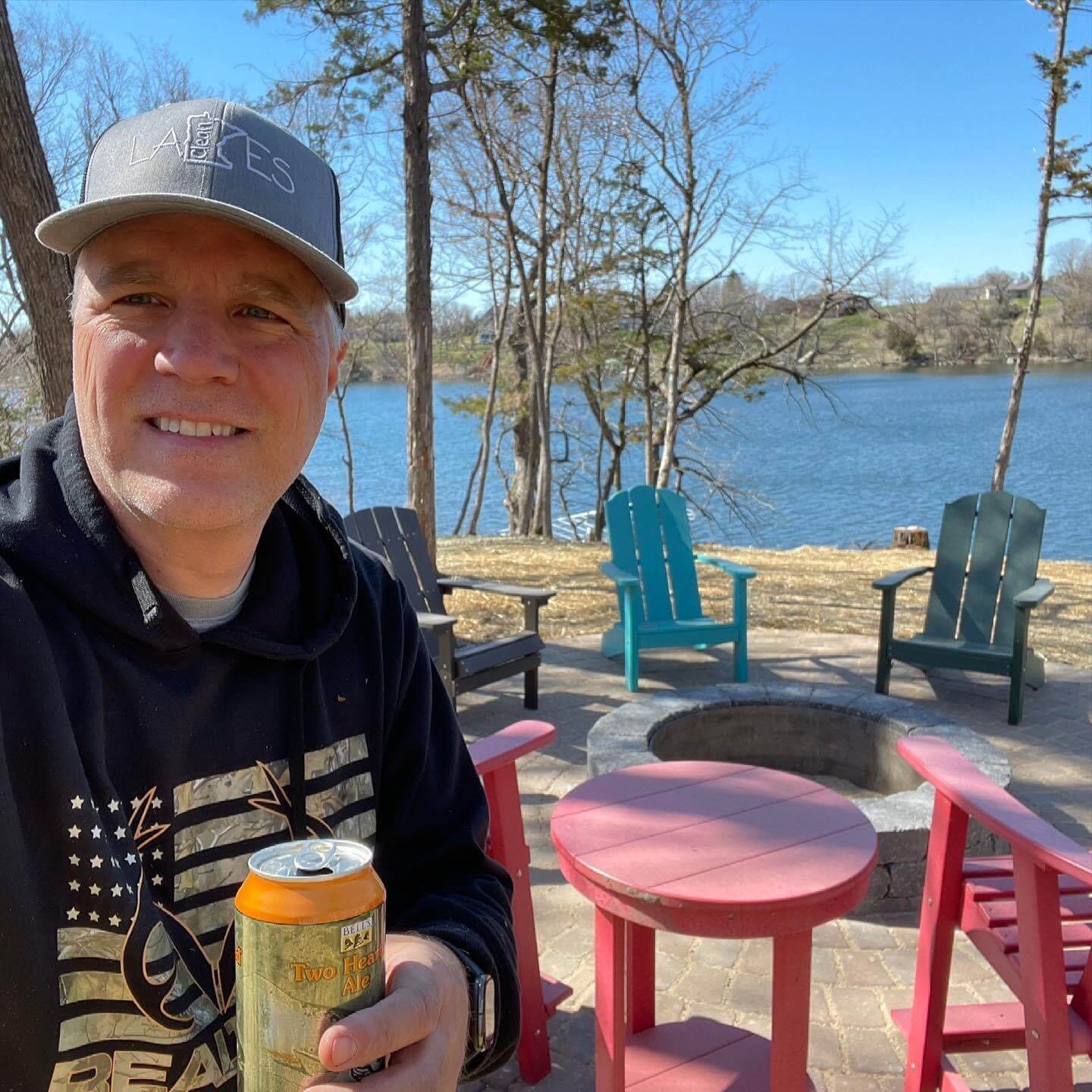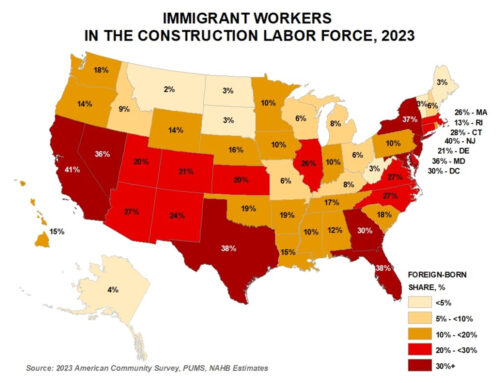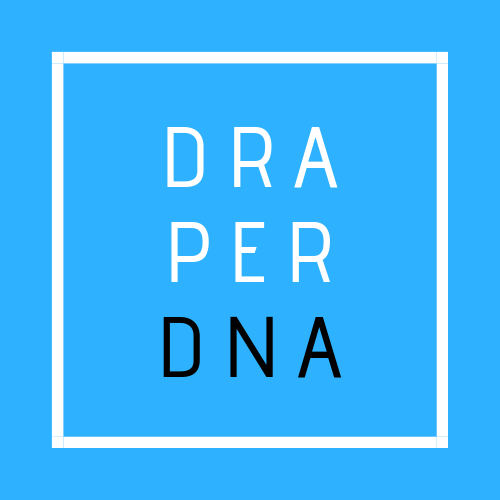There is a Difference featuring Brett Boyum
July 6, 2021
There is something to be said for how passionate professionals are when they work in home and building products. The thoughtful, experienced, and insightful building products expert (and Midwest-friendly) Brett Boyum joins us this week for one of our favorite interviews in the “There is a Difference” video and blog series. He talks about “falling into” the industry (sounds like someone else we know!) and how lucky he feels to have done so. We get to be reminded about how special family is and he even gives us all a few marketing, marcomm and e-commerce tips.
Brett: I’m Brett Boyum. I am the newly joined VP of marketing and offering at Uponor, having joined in November. I’ve been onboarding completely virtually up until the last couple of months when thankfully vaccinations became more prevalent, and also springtime allowed people outside. I finally am meeting peers and team members, and it’s been a great couple of months. I’ve spent over 20 years in the building industry, predominantly with Marvin Windows and Doors. A little over 20 years with them, then time with Cambria, and now with Uponor. I love this industry. Prior to Marvin, I would call it an adjacent market. I was with Northern Tool, which is a retail cataloger that actually sells to a lot of contractors. Then after that, I was with PUR Water Filters, which is an on-demand on tap water filtration system. So, I’ve always in the marketing world, just started out heavier in marcomm.
I kind of cut my teeth as a communications’ manager and a brand manager, and was fortunate to have opportunities at Marvin. To grow into the product management side and more traditional marketing. “The four P’s of marketing” and then as digital became more prevalent, grew our space in the digital world. So, I just really have enjoyed the combination of an industry like the building industry, which is so passionate. That all the people are so passionate about what they’re doing. Everyone believes they’re doing something that’s bettering the world, and then to be in a segment or a profession like marketing, where we’re able to engage with those customers and feel and share that same passion. It’s just, it’s been a blast.
How has the pandemic changed the construction marketplace from your point of view?
Brett: This is obviously a conversation that’s prevalent everywhere right now. Whether it’s online, blogs, or within probably every organization and building industry. I think there are two tracks to this. One, there are some new things that are popping up or being changed by the pandemic. I think the majority of change is really an acceleration of change that was already happening prior to the pandemic. If you go back through history, (I’m a big history buff) a lot of the most significant change in industry, even in the economy, or in the world itself happened when a significant crisis happens because it puts people in action mode. I think that’s what we’re seeing a little bit here in the building industry. What I think about what was going on pre pandemic that is being accelerated. Labor remains still an issue for the industry to expand and grow.
This was an issue before a pandemic, and it’s accelerated to become a more significant issue today. Access to labor pre-pandemic, it was talked about that it was an aging labor force in the construction industry. We weren’t bringing enough new people in. Well, then you get to the pandemic and it halts a lot of the education, the trade opportunities, the mentoring, and the training opportunities that younger tradesmen would have had. And consider the fact that people were out of work for a while and trying to get that labor reinvigorated has been difficult. So, on the negative side, that’s definitely something that I think everyone is feeling. In terms of what I would view as positive changes? Obviously, digital is playing a larger role. People had to learn how to do Zoom meetings, customer calls or sales calls.
They had to use digital to learn about products because our sales and marketing folks weren’t able to get in front of people for “lunch-and-learns”. That is exciting because it’s opening it up a whole new world. To an industry that hadn’t yet fully embraced digital in many ways, I think it’s exciting to see that grow and expand in its presence with customers. The other part for me, that I think is starting to see accelerated change, is the sustainability and the healthy environment space or the healthy space. Prior to the pandemic, it was starting to gain some traction. There was the WELL Building Institute and other organizations with the green movement. There’s always been some traction with that, but I think through the understanding of people being in their home more… Through the pandemic and understanding not only the physical health of your home, but the social and emotional health of your home, and the space that you’re living in has become even more important.
As we think about how we go back to offices, and how we go back to work. That’s going to be next in the minds of people is what does that environment look like? Is it healthy and so forth? I think that’s a big accelerated one. Some of the new changes I see coming is just how we do work in general, right? I mean, construction sites, the logistics now. I think there’s a large population that is going to be prepared for the next pandemic. Not saying that it’s going to happen, but I think a lot of people believe this isn’t one of those once-in-a-lifetime events like it historically has been. With that, how do you logistically set your workplace up to be ready for the next major event? That’s also job sites. There’s going to be increased pressure on coordination, and logistics. How do you do that and continue to manage your cost structure to where you’re still being able to deliver that value to the customer?
I think that’s something that’s really going to be a large effort to tackle for a lot of industries, a lot of companies and a lot of suppliers as well. Then there’s back to work in a hybrid fashion. It’s interesting when you read about it, everyone is focused on the office folks going back to work. Are they going to go back full-time? Are they going to go back hybrid? Are they going to be all virtual? When you talk to some of our customers and read some of the construction specific articles, you’re seeing that same questioning happening around construction sites. Can project management be done remotely versus on the site, 100% of the time? How do you coordinate the different contractor types, electricians, plumbers, roofers, framers? How do you coordinate them so that you don’t have them all in the space at one time? It goes back to that logistics side, but it’s a new form of logistics. I think the construction sites are going to deal with hybrid work as much as people going back into the office.
What role will e-commerce have in the construction industry?
Brett: You can’t ignore it, but you can avoid it. The impact of it will depend on probably the product category that you’re talking about. Construction as a whole is very large, and there are so many different categories of products. I tend to think about it maybe a little bit broader than e-commerce. To many people, e-commerce is going online, purchasing a product, shipping to your site or home, and you’ve made a direct purchase.
I think about our industry and there are so many aspects to the traditional channel that are vital and important. Especially with the relationships with the contractors and so forth. I really think about the opportunity with digital versus just e-commerce.
It’s how do we grow with them and how do we complement, or how do we plug into the work that they’re doing and vice versa? How can they plug in and complement the work that we’re doing with digital? I think about it as a whole customer journey. Where does digital start to play a bigger role in the influence, the conversion and the loyalty of our customers? For me, it’s bigger than a transaction. It’s that entire customer journey. Digital is going to play a larger and larger role upfront. Way upstream in the customer engagement, and customer education. It’s also going to play a role in the “intermediate areas stage” that happens right before the purchase. Making sure the specs are correct, making sure that the order looks correct, making sure that we have supply.
If there’s anything that we’re hearing the most about it’s the Amazon effect. It’s been the transparency from the point of order to the point of delivery. Where is the product? I hear that in all different categories in the industry. That’s where you can focus because historically that’s been the biggest pain point or the biggest point of tension for contractors — Not knowing where their product was in the stage of the time they ordered to when they’re going to get it. Time is money for everyone. Especially the contractor.
Digital as a whole is going to continue to grow, play a larger role in the overall customer journey. I do think that, especially, in certain categories, e-commerce is going to play a very big role. If you think about it homedepot.com, Lowe’s, they’re all getting into the construction trades world and using e-commerce as a platform for it. That’s not the only place that contractors shop. We know that, and we’re thankful for channel partners, the traditional channel partners who are playing an important role. We see them starting to really amp up their digital game as well.
What is the mystery behind marketing to architects?
Brett: When I read this question, I chuckled. To me there isn’t a mystery. One of my favorite things is marketing and engaging with architects. They’re so creative. Some of the best learning I had at Marvin were meeting with the teams in their offices or having coffee with them and just enjoying a conversation. I learned more about design and the building industry and process than I could’ve ever by reading books or going online. They’re so engaging as a whole and as a group. They have this passion that is just beyond comprehension. The thing that I love the most with architects too, is that they just they’re internally optimistic and believe everything is possible.
Obviously, there was a significant focus on architects was when we did visits. It constantly challenges you in my world, as a marketer, how to market to them. It challenged our thinking and questioned what are the right ways? What is the right messaging? What is the right engagement? What is the right frequency of engagement? How do you develop loyalty?
They always keep you challenged on how to do that, but they are also always willing to share ideas, which I truly appreciate. On the “always possible” side, when you see some of the things that they were doing to push design — Bring in aspects from both commercial and residential, and meld them together in their designs, for example — It was so fun and so energizing to work with them.
You have to understand the whole value chain and understand the role, which is very important. The role that the architect plays in the influence, the specification. Also, frankly, the championing of your brand. If you have a great relationship with them and you can deliver what they need. Or if there’s a reason why you can’t actually deliver what they need. You sit down and talk to them or explain to them the why and work with them as a partner to do a work around in the design. That’s what I always loved too, is that they were always willing to hear other’s ideas on how to do things differently.
For me, it really wasn’t a challenge to market to them. It was more a fun challenge of always trying to find new ways. As long as you understand their role, and you’re not going to generate a ton of leads. You’re not going to be able to track that lead all the time to a conversion, but it was about relationship building. It was about understanding the specification and then understanding that they are really an important influencer in the project process. Then they’re very easy to market with, I would say versus market to.
You have to get out into the marketplace, talk to them, learn the language that they speak, and what they’re motivated by. Really it’s about programs. One of the things that we did at Marvin was we always had an architect program. Whether it be tours to Warroad or project competitions, we always learned that it was an ongoing engagement. It wasn’t a one-and-done, or it wasn’t, “We’re going to put a digital ad in front of them, and that’s going to be considered developing a relationship with an architect.” It was being in the field, both from a sales and a marketing standpoint, where we really found the value.
So, how do you create excitement for a product that’s behind a wall?
Brett: I know, I kid around saying that I’ve gone from windows and countertops to pipe and fittings. Actually, I’ll go back to our initial conversation around this industry and the passion that the people that are in the industry have. The reality is it doesn’t matter if you’re in plumbing, pipe and fixtures, or pipe and fittings. If you’re selling the fixtures like a Kohler, a Moen, a Delta, whatever, or Marvin and Anderson Windows. The people that are dealing with those products in those companies and brands have an unbelievable passion, an undeniable passion for what they do. So, it’s not hard to create excitement about a product that’s behind the wall. When you’re selling to a plumber, a mechanical contractor or to our supply partners because they’ve got their own passion for what they’re doing, they understand that what they’re doing as part of this greater whole of making a home for someone or creating a building for an industry. Frankly, the role of “behind the wall” is as important as the beauty of some of the other products that are outside the wall, right?
I’m still learning this because like I said, I’ve been here seven months, but I’m still learning. The passion holds true from the three different product categories I’ve been in now. That when you’re dealing with the people that are in this segment, dedicated to this segment, and are experts in their trade or in their craft. They have the passion, they have the excitement, it’s hard not to get excited about it too. For me, it’s all about the people that we’re partnering with and that we’re working with. In terms of the actual product itself or the application of plumbing and pipe behind the walls. How do you get excited about that?
You know one of the things that I’m really excited about where my career has transpired has been always working with brands that are about adding value. It’s not just about the product, it’s about the solutions that we provide. It’s about understanding the role that we have in the overall success of a project, and delivering that value to that customer. Uponor is no different than when I was at Cambria or when I was at Marvin. It’s the same value that we hold true, and almost as passionate about that as we are about our customers or the products that we’re selling.
We’re selling the solution, we’re selling the idea of more efficient and enabling more productivity for the customers. It’s not just about the pipe and the fittings. It’s about the other things that we bring to that customer that are adding value, and we’re partnering with them versus just selling to them. That’s what I think is so exciting about Uponor in general. The product trades themselves, are easy to rally around and get excited about because they just love what they do.
What advantage does “Minnesota nice” have in business today?
Brett: If I think about it, I’m going to take “Minnesota nice” in its truest form. I do think that as a culture in Minnesota, we tend to be courteous, tend to be genuine, right? I’m going to take it from that viewpoint and say, “What does that help in business today?” I think that through this pandemic, people have recognized the need for empathy, and the need for understanding. The need for just assuming you don’t know everything about the situation of anyone else, right?
Everyone has their own battles. Everyone has their own situations that they’re dealing with. I don’t think that ever has come through truer than through this pandemic. As we move forward, I hope that stays true in our business interactions. I hope that relationships can continue to matter more than maybe what they did. I think that despite the negative connotation of “Minnesota nice”. I think the part of “Minnesota nice” that I do gravitate towards is relationships are important, people are important. In business and moving forward, that’s going to be how brands can grow. It is easy to say digital displaces people. It’s not going to, people are still going to matter in the end. I’m hoping that moving forward that’s what businesses realizes through the pandemic.
What is your greatest professional achievement to date? What will be your greatest professional achievement when you retire?
Brett: I haven’t really thought about my own personal achievements much because everything that we’ve worked on, and that I’ve grown up has been about working as a team. I’ve tried to make sure that that stayed forefront, but I mean, I will point to a moment in both personal life and career. Where there was a moment things could have gone a lot differently, and that was about 12 years ago. I was really starting to grow into my roles at Marvin. I’ll say earning, but also having the opportunity, thankfully from the Marvin company to continue to advance with more responsibility. At that same time, I was diagnosed with epilepsy. I had two seizures that came out of nowhere, and this was after four years of my oldest son being diagnosed with epilepsy.
Within months of my diagnosis, my dad was diagnosed with Alzheimer’s or dementia, I should say. So, that’s a lot coming at a 40-year-old. I’ll point to getting through those two years of uncertainty and maybe questioning, “Do I want to continue this career track? Is that putting the pressure on me? If I spent enough time with my family?” I was fortunate to work for an organization that believed in family work balance, and I have an amazing family and wife that supports me.
Through the involvement with the Epilepsy Foundation, and then later on with the Alzheimer’s Association to help understand my dad’s progression. I was able to work through those two years and continue a career that I just have a passion for and love. So, it’s not a specific achievement, but I’m going to say that for me, getting through that hurdle was probably the biggest thing that I’ve had had to deal with. I’m so appreciative of all the people that have been on that journey with me to help me get through that.
Wow. Brett, this has been such a meaningful conversation. Thank you for sharing your incredible experience.
Do you have a story to tell? We want to hear it. Email Abby at abby@draperdna.com to set something up.





